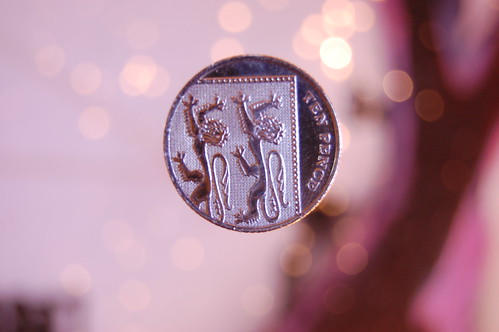A British Ten Pence piece with a bokeh behind it
The British decimal ten pence (10p) coin – often pronounced ten pee – is a unit of currency equalling ten one-hundredths of a pound sterling. Its obverse has featured the profile of Queen Elizabeth II since the coin’s introduction in 1968, replacing the two shilling coin in preparation for decimalisation in 1971.[1] Three different portraits of the Queen have been used on the coin, with the latest design by Ian Rank-Broadley being introduced in 1998. The second and current reverse, featuring a segment of the Royal Shield, was introduced in 2008.
Five pence and ten pence coins are legal tender only up to the sum of £5; this means that it is permissible to refuse payment of sums greater than this amount in 5p and 10p coins in order to settle a debt.[2]
The ten pence coin was originally minted from cupro-nickel (75% Cu, 25% Ni), but since 2012 it has been minted in nickel-plated steel due to the increasing price of metal. From January 2013 the Royal Mint began a programme to gradually remove the previous cupro-nickel coins from circulation with replacement by the nickel-plated steel versions. This will have the side effect of leaving only one circulating reverse and obverse combination (see design section below).[3]
As of March 2013 there were an estimated 1,598 million 10p coins in circulation with an estimated face value of £159.797 million.[4]
Source: http://en.wikipedia.org/wiki/Ten_pence_%28British_coin%29
License : Creative Commons (http://creativecommons.org/licenses)
FFCU image curated by Free For Commercial Use
Search on twitter for hashtag #FFCU

